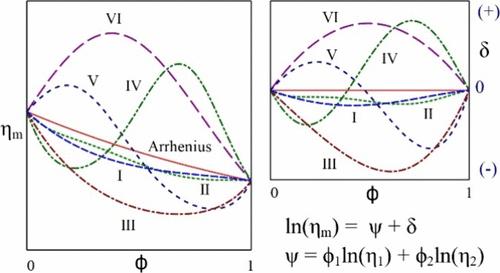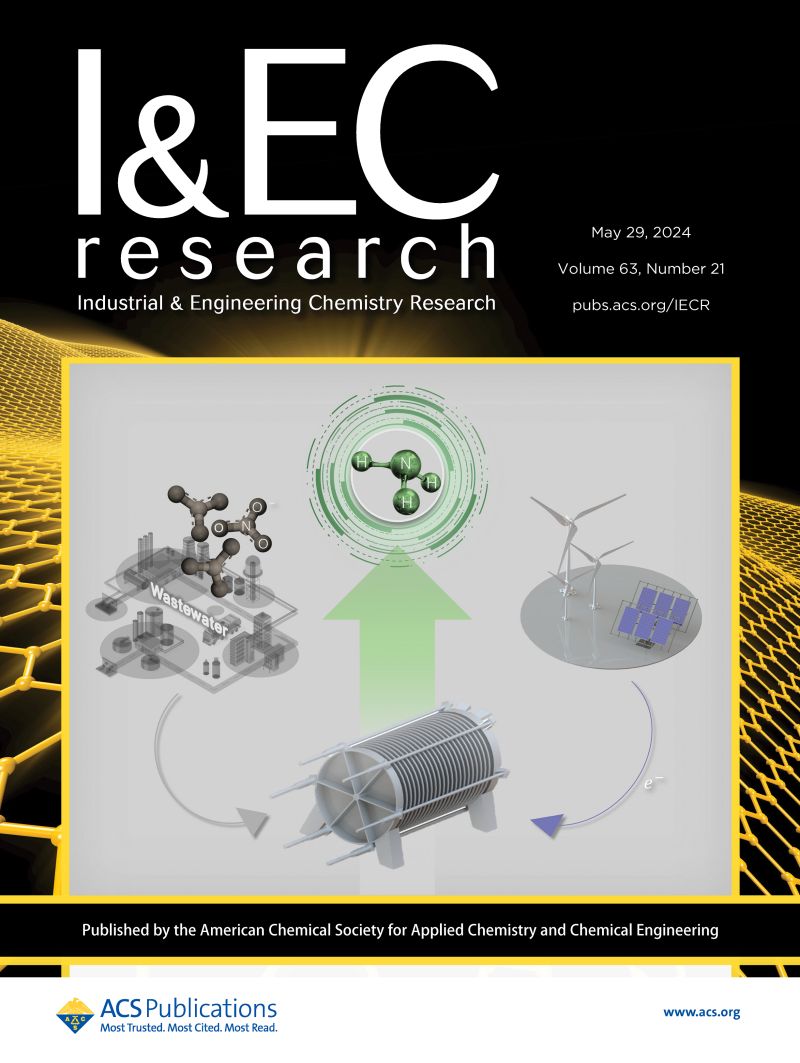Viscosity of Binary Liquid Mixtures: A Comparative Analysis of Mixing Rules
IF 3.9
3区 工程技术
Q2 ENGINEERING, CHEMICAL
引用次数: 0
Abstract
Modeling the viscosity of binary liquid mixtures (ηm) presents significant challenges due to the complex molecular interactions and the potential for nonmonotonic behavior. A total of 22 viscosity models were evaluated, with ln(ηm) expressed as the sum of an ideal component and a deviation term (δ), using the Arrhenius model as a reference. Based on the extensive experimental data, a classification scheme was developed to categorize ηm and δ into six distinct trend types, thereby aiding in the selection of the most suitable model. For each category, both ηm and δ were computed using all 22 models and compared to experimental results. The Ramírez de Santiago model, along with models incorporating one or more fitting parameters, demonstrated strong performance for monotonic mixtures (type I). For mixtures exhibiting nonmonotonic behavior, polynomial models, such as the Heric–Brewer, Legendre, and Redlich–Kister models, provided the best fit. The optimal polynomial degree was determined through leave-one-out cross-validation. This study offers a systematic approach for selecting the most accurate viscosity model for binary liquid mixtures.

二元液体混合物的粘度:混合规律的比较分析
由于复杂的分子相互作用和潜在的非单调行为,二元液体混合物(ηm)的粘度模型提出了重大的挑战。共评价了22种粘度模型,ln(ηm)表示为理想分量和偏差项(δ)的和,以Arrhenius模型为参考。在大量实验数据的基础上,提出了一种分类方案,将ηm和δ划分为6种不同的趋势类型,从而帮助选择最合适的模型。对于每个类别,使用所有22种模型计算ηm和δ,并与实验结果进行比较。Ramírez de Santiago模型,以及包含一个或多个拟合参数的模型,在单调混合物(I型)中表现出很强的性能。对于表现出非单调行为的混合物,多项式模型,如Heric-Brewer, Legendre和Redlich-Kister模型,提供了最佳的拟合。通过留一交叉验证确定最优多项式度。该研究为选择最精确的二元液体混合物粘度模型提供了一种系统的方法。
本文章由计算机程序翻译,如有差异,请以英文原文为准。
求助全文
约1分钟内获得全文
求助全文
来源期刊

Industrial & Engineering Chemistry Research
工程技术-工程:化工
CiteScore
7.40
自引率
7.10%
发文量
1467
审稿时长
2.8 months
期刊介绍:
ndustrial & Engineering Chemistry, with variations in title and format, has been published since 1909 by the American Chemical Society. Industrial & Engineering Chemistry Research is a weekly publication that reports industrial and academic research in the broad fields of applied chemistry and chemical engineering with special focus on fundamentals, processes, and products.
 求助内容:
求助内容: 应助结果提醒方式:
应助结果提醒方式:


